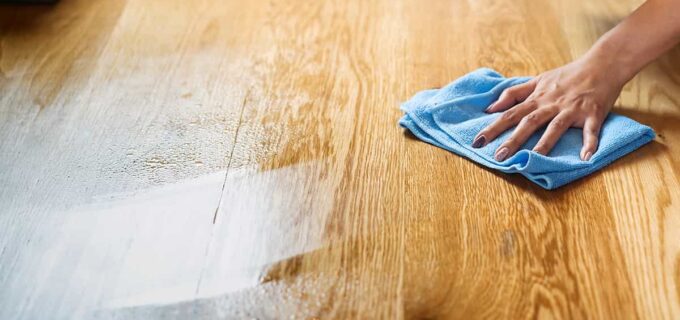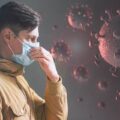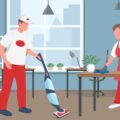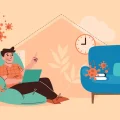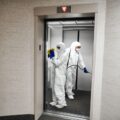We are going to explore and re-iterate how the Covid-19 virus can spread easily from one person to another including the potential for cross-contamination and infection via inanimate objects and surfaces. We will also move on to examine the difference between cleaning, sanitising and disinfecting in the context of keeping objects and surfaces within your own home free from pathogenic bacteria and viruses and in particular, how you can ensure the highest levels of surface protection and infection control thereby guarding against the transmission of the Covid-19 virus. Finally, we will look at specific techniques for cleaning and disinfecting different types of surface whether hard non-porous surfaces or upholstery and fabrics.
The background research required to support the creation of this educational article has drawn on the in-house expert knowledge of some of best cleaning and disinfection service companies in Singapore. These experts have openly shared their extensive experience of providing professional disinfection services in Singapore as well as how some of the new innovative products and procedures they use professionally can be adopted within your own home.
According to the United States Centre’s for Disease Control (CDC) maintaining the highest standards of personal hygiene including the habitual wearing of a mask in public and observing thorough hand washing and hand sanitising procedures are among the most effective methods of containing the spread of the Covid-19 virus. However, they also point out that high standards of home hygiene and infection control very important too. Therefore, this article will describe the simple steps to be followed to effectively clean, sanitise and disinfect the objects and surfaces in your own home and thus, minimise your risk of infection.

How Covid-19 is Transmitted
The Covid-19 virus is spread from person to person by either direct or indirect contact with a person that is ‘Covid-19 positive’ and therefore actively shedding large numbers of potentially infectious viral particles into their surroundings.
The most common method of Covid-19 transmission is via infectious droplets that are expelled from the respiratory tract when people talk, shout, sing, sneeze or cough. These droplets vary greatly in size from a non-visible microscopic size to large droplets that are clearly visible to the naked eye. The size of the droplet will determine how long they may remain suspended in the air and how far they will travel. The scientific evidence suggests that on average a droplet infected with Covid-19 viral particles will travel at least 6 feet from the point of origin until the natural forces of gravity cause it to drop out of the air and to settle on a surface or object. Thereby, immediately rendering that surface contaminated and potentially infectious. However, the smaller the infected droplet, the longer it will remain suspended in the air and the further it will travel.

Additionally, the smaller the droplet, the easier it is for them to be inhaled and respired by another individual. Indeed, some droplets are so small that the aqueous component very quickly evaporates leaving only the infinitesimally small viral particles themselves suspended in the air and consequently, due to their small size and mass, they are endowed with the ability to stay airborne for several days and travel much further from their point of origin on air-currents.
The ability of the Covid-19 virus to remain infectious and airborne for extended periods of time is why wearing a face-mask and adhering to social distancing rules outside our own homes is so important.
In addition to being indiscriminately spread into their immediate surroundings by airborne contamination, a Covid-19 positive individual actively shedding infectious viral particles will also unwittingly contaminate everything they touch.
We can now see that the Covid-19 virus can either be spread directly from one person to another via inhalation and subsequently causing a respiratory infection, or indirectly by contaminating surfaces and objects and then being transferred to another person when they pick up the virus from a contaminated surface or object and then subsequently touch their own eyes, nose or mouth.
Once again, this reinforces why the wearing of a mask and regular handwashing is so important in containing the spread of the Covid-19 virus.
How Long Coronavirus Lasts on Surfaces
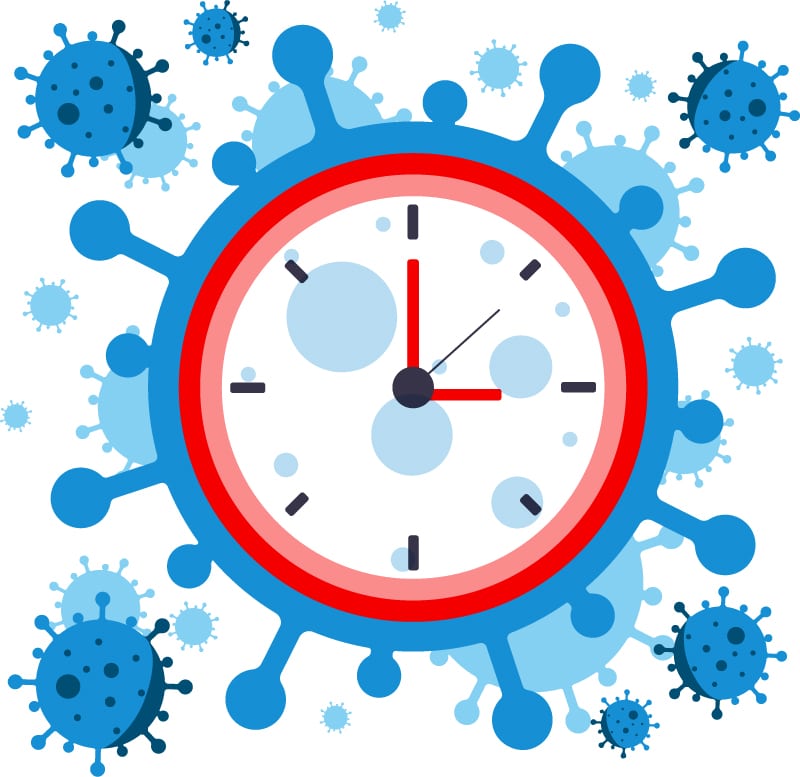
Now that it is clear how the Covid-19 virus can be transferred to an object or surface, now let us consider how long the virus can remain viable and infectious once deposited.
A recent scientific article study published within the New England Journal of Medicine suggests that the infectious viability of the Covid-19 virus is contingent on a number of contributory factors: first and foremost, the physical nature of the surface itself and then additionally on the prevailing ambient temperature and Relative Humidity (RH). The results of this study are as follows:
| Covid-19 Lifespan | |
|---|---|
| Air | up to 3 hours (low humidity and zero air movement) |
| Plastic | 3 to 7 hours |
| Cardboard | up to 24 hours |
| Wood | up to 48 hours |
| Paper | up to 4 days |
| Glass | up to 4 days |
At present, the research on how long the virus can survive on fabrics and soft furnishings is unknown, but the experts suggest that it might be from a few hours to a few days once again depending on the physical nature of the fabric as well as the ambient conditions. Irrespective of the equivocal evidence, the CDC clearly advocates cleaning, sanitising and disinfecting both hard and soft furnishings as a primary infection control measure to prevent the spread of the Covid-19 virus.
Taking Precautions by Cleaning and Sanitizing
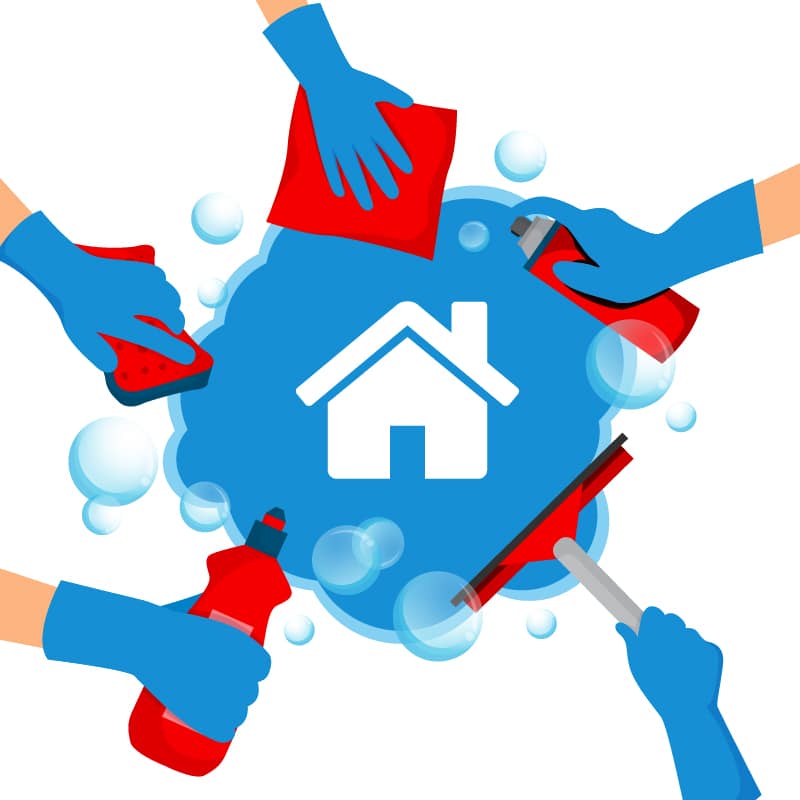
Until we have a much clearer understanding of how the Covid-19 virus can spread from one person to another via the cross-contamination via surfaces whether they be hard or soft, the CDC strongly recommends that we treat it in the same way as we would any other highly contagious infectious disease and clean, sanitise and disinfect the objects and surfaces in our homes thoroughly on a regular basis.
In the second and third parts of this three-part series, we will take further advice from our resident cleaning and disinfection specialists in Singapore and provide you with all the information you need to keep you and your family safe from the risk of Covid-19 infection.
The Definition of Cleaning
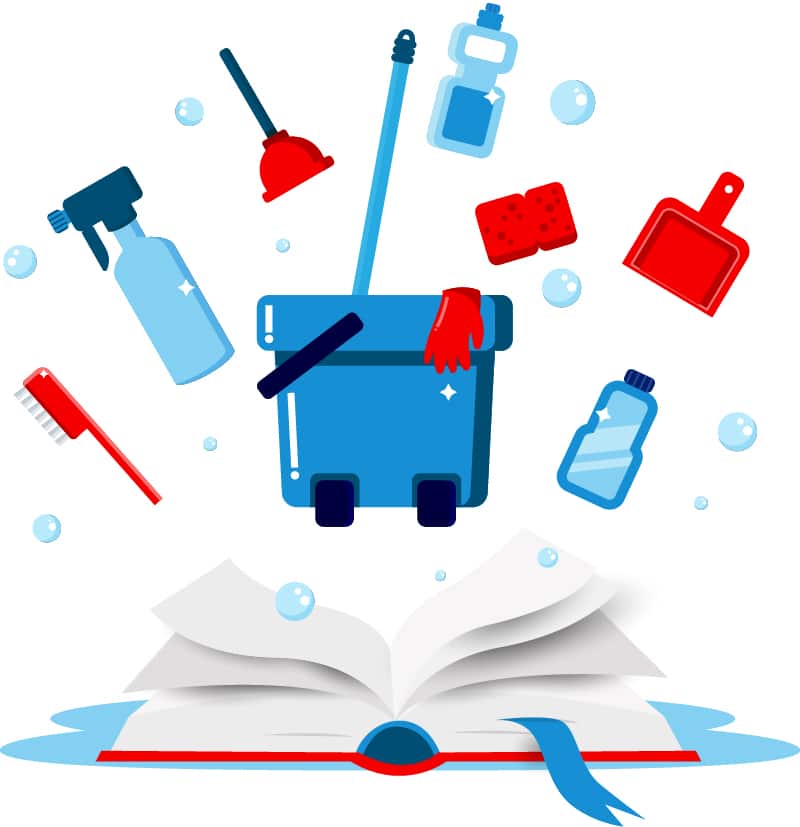
The advice given by our professional cleaning and disinfection company in Singapore is based on the US Centers for Disease Control (CDC) and is as follows:
‘Cleaning’ is defined as the removal of soil and organic material from surfaces and objects and is usually achieved by using detergents and water combined with agitation and the use of cloth, brush or some other tool or appliance. When effective cleaning has taken place, there is usually a tangible difference in the ‘before and after’ appearance.
Thorough cleaning is required before high-level disinfection and sterilization can take place as the organic and inorganic residues that remain on objects or surfaces will interfere with the effectiveness of these subsequent procedures. If detergents and very hot water are used when cleaning, whilst there may also be a significant reduction in the microbial loading remaining on a surface, it should not be confused with sanitising, disinfection or sterilisation which must achieve their own species of levels microbial reduction to warrant this level of hygiene.
The Difference Between Disinfecting and Sanitising
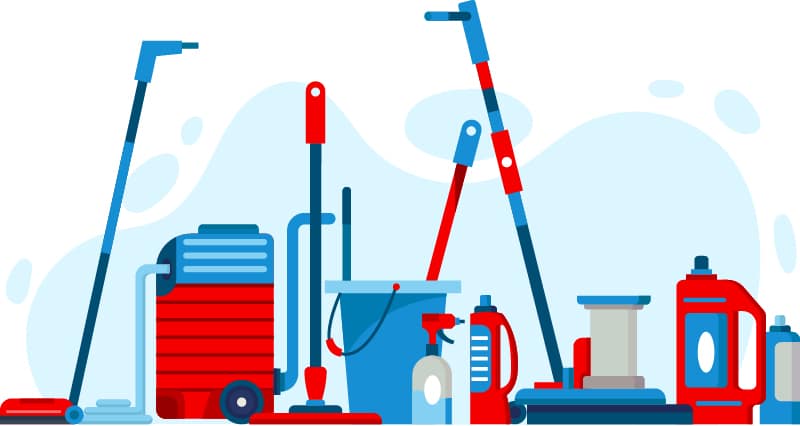
‘Sanitising’ by definition, goes a step beyond routine cleaning and is intended to reduce the microbial loading on a surface or object and to achieve moderate standards of hygiene. It is usually achieved with hot water and relatively mild antimicrobial solutions. If sanitising is undertaken effectively, a reduction of 99% of the microorganism’s present should be achieved. Using accepted microbiological terminology, this is known as a ‘2 Log Kill Rate’.
‘Disinfection’ is the next highest level of hygiene that is undertaken specifically to substantially reduce the microbial loading on a surface or object and in particular, a reduction in the numbers of pathogenic organisms remaining. More professional chemicals and treatments are required to achieve an acceptable level of disinfection and result in a reduction of at least 99.99% (a 4 Log Kill Rate) to achieve this standard of hygiene.
‘Sterilisation’ is (by definition) the highest level of hygiene that can be achieved in terms of surface protection. Sterilisation is specifically intended to eliminate all microorganisms and pathogens from objects and surfaces. In order to achieve sterilisation, the treatment must result in a reduction of at least 99.9999% (a 6 Log Kill Rate) to fulfil the criteria for this definition of hygiene and infection control.
How Long Should Disinfectant Sit on a Surface?

The ‘dwell time’ or ‘residency time’ used in the context of surface protection, cleaning and disinfection pertain to the length of time a chemical product needs to remain present and ‘wet’ on a surface to enable it to work efficiently and effectively in reducing the microbial load.
The answer to this question depends very much on the specific product being used some products like ionised hydrogen peroxide vapour can achieve an incredible 6 Log Kill Rate and thereby deliver a 99.9999% reduction in the microbial load on a surface and therefore render it technically ‘sterile’ almost instantaneously!
Other, much less effective liquid formulations may require dwell times of several minutes to achieve a 2 or 3 Log Kill Rate. As always, it is essential to follow the manufacturers’ instructions and guidance on this issue as any deviation may jeopardise the performance of the product and in turn, the level of hygiene and microbial safety achieved.
Which Surfaces Require Disinfecting?

If you are at home and either practising ‘shielding’ or ‘social distancing’ you should not have to worry unduly about sanitising and disinfecting your home environment on a regular basis with the exception of the following:
- Packages and deliveries entering your home from outside
- Multi-user electronic equipment
- Children’s toys, games and furniture
- Kitchen worktops, chopping boards, crockery and utensils (use a dishwasher where possible)
- Doors, door handles and push plates
What Home Surfaces Need to Be Disinfected the Most?
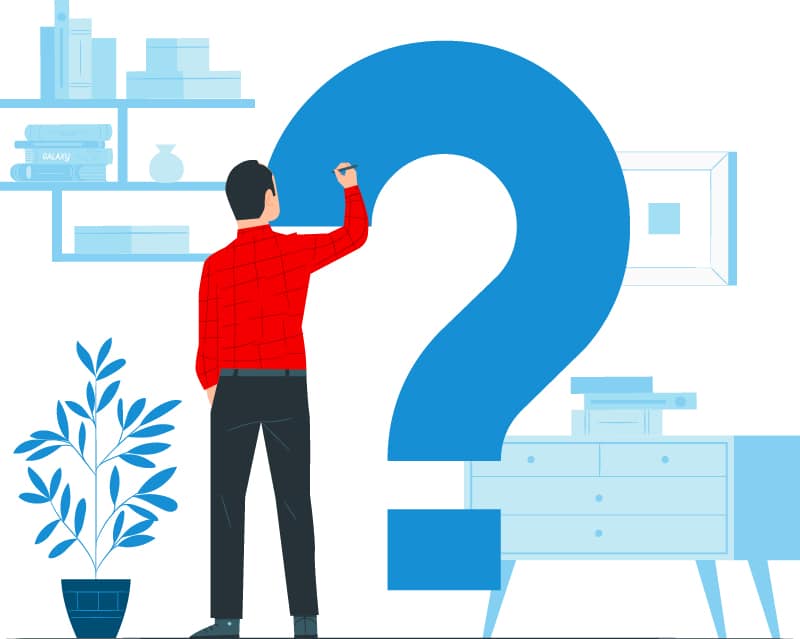
Anything that enters your home from the outside world and is likely to come into contact with your hands or food should be cleaned, sanitised and/or disinfected regularly. In particular, it is essential to clean and disinfect high traffic ‘high touch’ surfaces such as:
- Door handles
- Light switches
- Tap handles and all bathroom fixtures and fittings
- Clothing and shoes that have been worn outside
- Backpacks, briefcases and handbags
- Any worksurface or countertop especially after placing packages or deliveries on them
Always Do This After Cleaning and Disinfecting
Irrespective of which products you use or what level of hygiene and infection control you are aiming to achieve, always allow surfaces to air-dry quickly and thoroughly to prevent the further incubation and proliferation of potentially pathogenic microbes.
Additionally, be sure to discard all disposable cleaning products and apparel with appropriate care as it may be potentially contaminated and contagious; and finally, always wash your hands thoroughly when completed.
How to Effectively Clean, Sanitise and Disinfect Various Surfaces in your Environment
Earlier, we explored and re-iterated how the Covid-19 virus can spread easily from one person to another including the potential for cross-contamination and infection via inanimate objects and surfaces.
We will now look at how to effectively clean, sanitise and disinfect various surfaces and objects. As usual, the background information required to support the creation of this educational series has been drawn from the in-house expert knowledge of some of best cleaning and disinfection service companies in Singapore. These experts have openly shared their extensive experience of providing professional disinfection services in Singapore as well as how some of the new innovative products and procedures they use professionally can be adopted within your own home.
How to Clean Upholstered Surfaces
When it becomes necessary to clean soft fabric surfaces and objects in the home such as carpets, rugs, curtains, chairs, sofas, cushions, pillows, mattresses etc. it is best to commence the process by removing small spots and blemishes with the selective use of a powerful proprietary stain remover. The most effective products use plant-based enzymes to dissolve organic stains and residues such as blood, wine and food.
Following spot treatment, all items that can be laundered in a washing machine should then be washed in accordance with the manufacturer’s instructions at the warmest possible temperature. Once again, a biological enzyme-based detergent should be used to guarantee the best results followed by natural drying wherever possible. For larger items, an upholstery and carpet shampoo designed to be effective on stains yet gentle on fabrics should be used.
In addition to the recommendations above, the United States Centers for Disease Control (CDC) also suggest the following guidelines:
- Avoid shaking linens and bedding and thereby dispersing pathogenic organisms into the air.
- Always wear a mask and disposable gloves when handling bed linen or clothing from anyone that is ill and in particular anyone that has tested positive for the Covid-19 virus.
- Potentially infectious items of clothing and bed linen should be laundered in accordance with the manufacturer’s recommendations at the highest possible temperature.
- Thoroughly clean, sanitise and disinfect all laundry baskets and containers as it must be remembered that the Covid-19 virus can survive on some surfaces for several days.
- In particular, for people that work in potentially high exposure and thus high-risk environments such as hospitals, universities, schools or on public transport should immediately remove their work clothes when they arrive home and launder them on a high-temperature wash.

How to Disinfect Upholstered Surfaces
The disinfection of upholstered surfaces will follow the same sequence as cleaning (see above) and should commence with spot and stain removal followed by laundering at the highest temperature possible.
For larger items that cannot be laundered, then treatment with a nebulised, ionised aerosol of hydrogen peroxide is recommended to immediately kill all the pathogenic organisms that might be present and lingering on the fabric. This can then be followed by the application of a long-lasting anti-microbial surface treatment containing a non-leaching organo-silane based disinfectant spray.
How to Clean Semi and Non-Porous Surfaces
All non-porous ‘high-touch’ surfaces such as door handle, grab rails, toilet fixtures and fittings should be thoroughly cleaned with hot soapy water. Once clean, any excess moisture remaining on the surfaces should be removed using disposable paper towels. Whilst during this challenging period where infection control has come to the forefront, the use of disposable towels may not be the most eco-friendly option, they do significantly mitigate the risk of cross-contamination throughout one’s home and the subsequent risk of disease transmission.
Alternatively, you can use a microfibre cloth that has been impregnated with a long-lasting antimicrobial agent called BRProtect™ However, even when using this type of cloth, they should be used for shorter periods of time in between high-temperature laundering.

Disinfecting Semi and Non-Porous Surfaces
When disinfecting hard non-porous surfaces (following an effective cleaning protocol) it is essential to follow the manufacturer’s directions for us on the label. As we explored in Part Two of this series, all traditional liquid disinfectants require specific dilution rates and ‘dwell times’ to be effective.
One of the most effective disinfectants against the Covid-19 virus is an appropriately diluted solution of Sodium Hypochlorite (bleach). Of course, as with all bleaching agents, you should ensure it will not adversely affect the surface being disinfected.
For large areas the quickest and most effective means of disinfection is a treatment with an aerosol of hydrogen peroxide. This will immediately kill all the pathogenic organisms that might be present. Once again, following this initial immediate kill, it would be prudent to follow up with a long-lasting anti-microbial surface treatment.
How to Disinfect Mobile Phones

Most people do not realize that mobile phones are amongst the dirtiest and most highly contaminated surface that they will come into contact with on a regular daily basis. Indeed, a study conducted by a leading United States University (Arizona) determined that most mobile phones carry a bacterial loading 10 times higher than most toilet seats.
Fortunately, there is a simple way to keep high touch devices like your phones, remote controls and touch screen controls clean and hygienic:
- Firstly, remove all dirt, grease and organic residue using an approved disinfectant surface cleaner. Of course, it is essential that the product is certified safe for use on electronic devices and that the product is used sparingly in accordance with the manufacturer’s instructions and the device is left to air-dry thoroughly.
- Second, once completely dry the device can be easily disinfected with an alcohol-based wipe or spray that contains a minimum of 70% isopropyl alcohol. Once again, after application, allow the device to air-dry before use.
We hope that this has been comprehensive enough for you and actually aides in the limiting coronavirus exposure.
Related Posts
- COVID 19: Cleaning and Disinfecting Protocols
- Reduce Cross-Contamination on Touch Screen Surfaces with BRShield
- Watch How Fast Virus Spreads in your Environment
